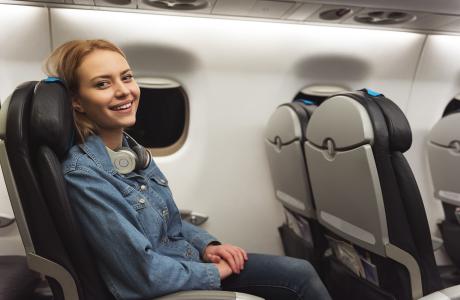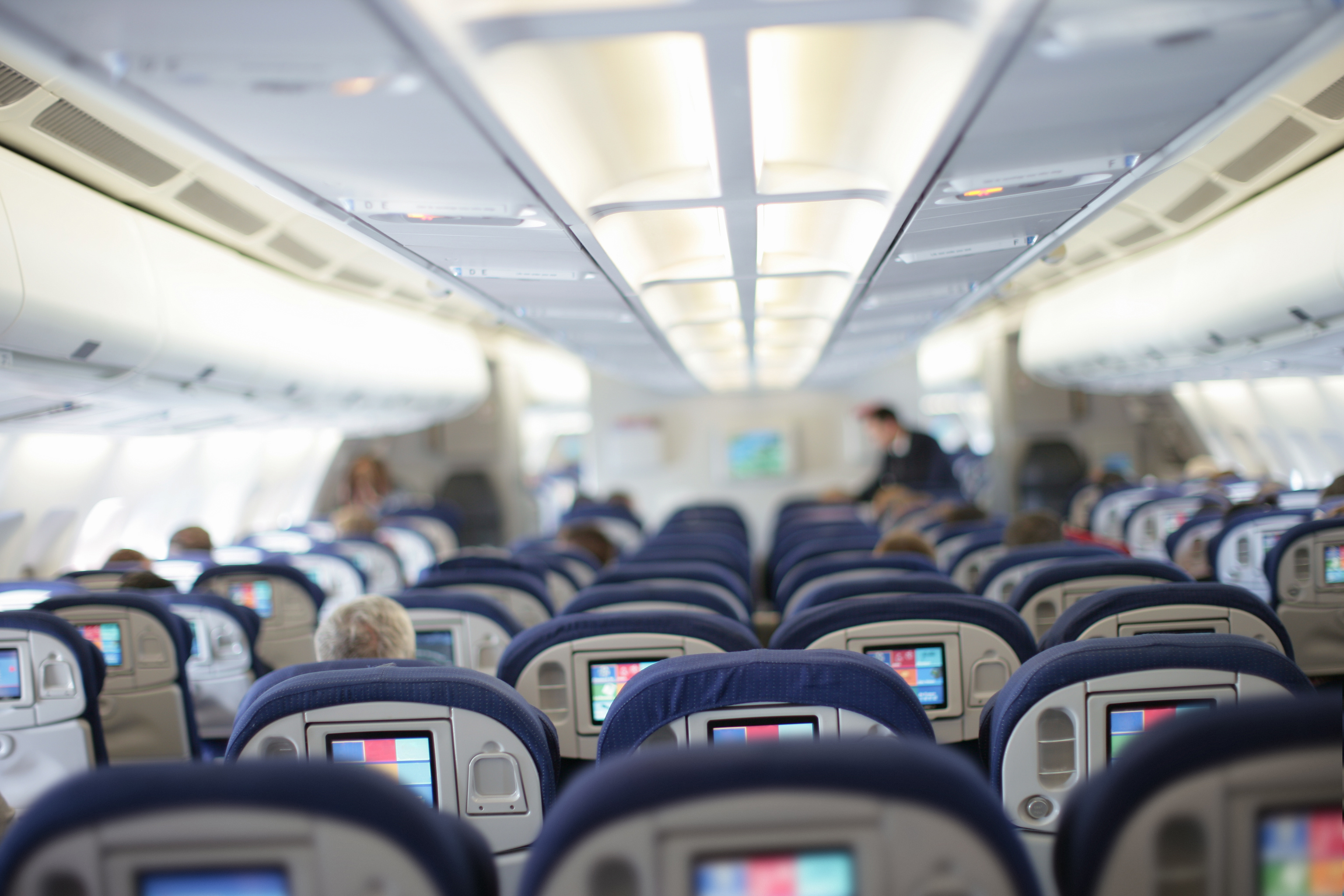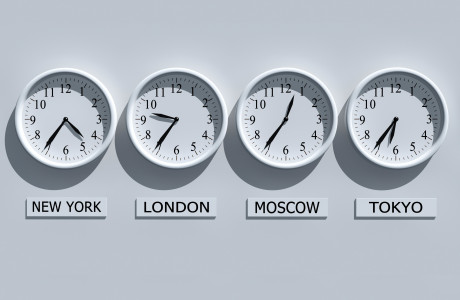
10 tips to keep you fit and comfortable during your flight
Who doesn’t sometimes dream of travelling to distant countries or flying south instead of going about their dreary daily routine? Whether it’s a short, medium or long distance – in the end, you’ll always have to deal with the lack of space in the aircraft cabin and the dry air that makes your eyes itch – with a refreshing shower as the only thing on your mind. Since aeroplanes today do not yet contain passenger showers – and it will probably not be the case in the near future for every passenger to have their own cabin – it’s necessary to resort to a few tricks. Our simple tips give you more comfort so you can travel in complete relaxation.
1. Drink a lot of water
Our body consists of 60 to 70 percent water. The air on board a plane is very dry from the air conditioning. Instead of the optimum 40 to 60 percent humidity, there is only around 15 percent. That’s why we lose a lot of fluid on board an aircraft through the air we breathe, our skin and our mucous membranes. If you don’t drink enough water on board, your blood will become thicker. It is precisely this lack of water that is one of the main reasons why flying is so exhausting for the body.
That is why it is immensely important to prevent this by drinking plenty of fluids. This refers primarily to water. For an optimal water balance: no coffee, no wine, no soft drinks and, above all, no alcohol. Depending on the cruising altitude, alcohol rises faster into your head and dilates your blood vessels. This leads to swelling of the legs, especially during longer flights. Therefore, simply drink plenty of water, because travelling is always better when hydrated!
2. An insider tip – moisturising lotion
Due to the extremely low air humidity in the aircraft cabin, your skin often craves moisturiser. A moisturising lotion can help here. In order for your lotion to actually make it on board with you, please note that the tube or container may only have a maximum volume of 100ml. We also recommend our magazine article Facts about hand luggage.
3. Don’t lose sight of the bigger picture
If you are dependent on visual aids, you should always reach for glasses instead of contact lenses. Dry aircraft air is not only noticeable in the form of dry skin, but also in the form of dry eyes. Therefore, you will feel much more comfortable on the plane with your glasses on than with your contact lenses in. In addition, you should consider packing eye drops with artificial tear fluid. With this combination you will always have a clear view on board.
4. Unabashed yawning
The best remedy for ear pressure is conscious yawning. Don’t be shy; it’s a proven means of pressure equalisation. Up there, the usual rules of etiquette – at least in this respect – are suspended. Alternatively, you can try sucking on candy or chewing gum. The main thing is for your jaw to be in motion; this loosens your facial muscles. If the plane takes off and quickly gains altitude, dry swallowing helps. When the plane lands and loses altitude, hold your nose and squeeze air in until it pops your ears. That’s the best you can do against the rising pressure.
5. Seat selection
Anyone who is not flying first or business class will find the legroom in the aeroplane to be restricting. If you fly economy, a seat on the emergency exit row is recommended. These can usually be reserved for a fee when booking the flight. So if you are over 1.80 metres tall, a few extra euros can save you hours of restlessness on your way to sunnier climes. If you’re someone who immediately closes their eyes once they get on the aeroplane, a window seat will work best. This is particularly suitable for sleeping. Especially if you’re travelling alone and don’t want to cuddle with the stranger sitting next to you. An aisle seat has the advantage that you can get up unhindered during the entire flight without having to disturb your seat neighbours. If you also struggle with a weak bladder, or if you like to stretch your legs with a short walk through the aeroplane, then this is the spot for you.

6. Occasional movement
No matter which seat you choose on the plane, you should move regularly. This is especially true for long-distance flights, because without movement, the back muscles cramp when sitting for a long time. A few simple circular and stretching exercises loosen the muscles and prevent this tension.
An easy exercise to start with:
Fold your hands in front of your stomach, stretch your arms forward with folded hands slightly angled. Then turn your palms away from your body and raise your arms diagonally upwards. Then simply turn the head to the left and then to the right a few times. This also brings your circulation back on track.
7. Preventing thrombosis
Even young people – who may feel this doesn’t apply to them – should not take thrombosis lightly. Support stockings are a popular aid and available in every pharmacy. If you are more likely to suffer from weak veins, use compression stockings as an alternative. Whether young or old: ideally, you should not cross your legs. This only complicates the circulation of blood unnecessarily. Instead, simply circle your ankles from time to time and lift your toes. When you get up occasionally, you keep your blood circulation going and actively counteract thrombosis.
8. The right choice of clothes
Anyone who has read this article carefully knows that the air in an aircraft is heavily air-conditioned. Therefore, it is usually a bit cooler in the aeroplane than out in the fresh air. Between day and night flights, the temperature on board also fluctuates. So the perfect outfit for a flight doesn’t just play a part. Ideally, you should use the tried-and-true “layered look”: this way, you’ll be warm enough and can remove one or two layers depending on the temperature. It’s a very simple and adaptable idea!
9. Freshening up while on the go
On a long-haul flight, sooner or later you’ll reach the point where you long for a refreshing shower. Of course, this isn’t possible. However, you can at least get a little feeling of freshening up in other ways. Take a toothbrush and toothpaste, deodorant, a comb and some make-up in your hand luggage. Some airlines even have disposable toothbrushes and toothpaste on board. Note, as always, that no container may hold more than 100 ml. A freshening-up kit for your hand luggage!
10. Finding the perfect sitting position
You should not only get up and move occasionally, but also change position from time to time. If you want to doze for a bit, you should take a comfortable posture beforehand that puts as little strain on your back as possible. In order to achieve the ideal seating position in the aircraft, it’s therefore important that you sit as far back in your seat as possible so that not even a sheet of paper could fit between your hip and the backrest of your aircraft seat. Now roll up your blanket, scarf or sweater. Then bend slightly forward and place the roll at the beginning of your lower back. With a well supported back, you will be able to sit much more comfortably, as it’s your back that usually causes problems first.
Insider tip: A massage ball
If you still have some room in your hand luggage, we recommend packing a massage ball. This little gadget can do wonders for you on a flight. If, despite following all the tips above, you feel the first signs of physical tension after boarding or during your flight, you can simply reach for the massage ball. Use it to gently massage the affected areas. This gives you short-term relief.
With these tips and tricks, the next long-haul flight won’t hurt you a bit. Don’t let a lack of humidity or space get you down – make your trip as comfortable as possible. We wish you a pleasant flight!



